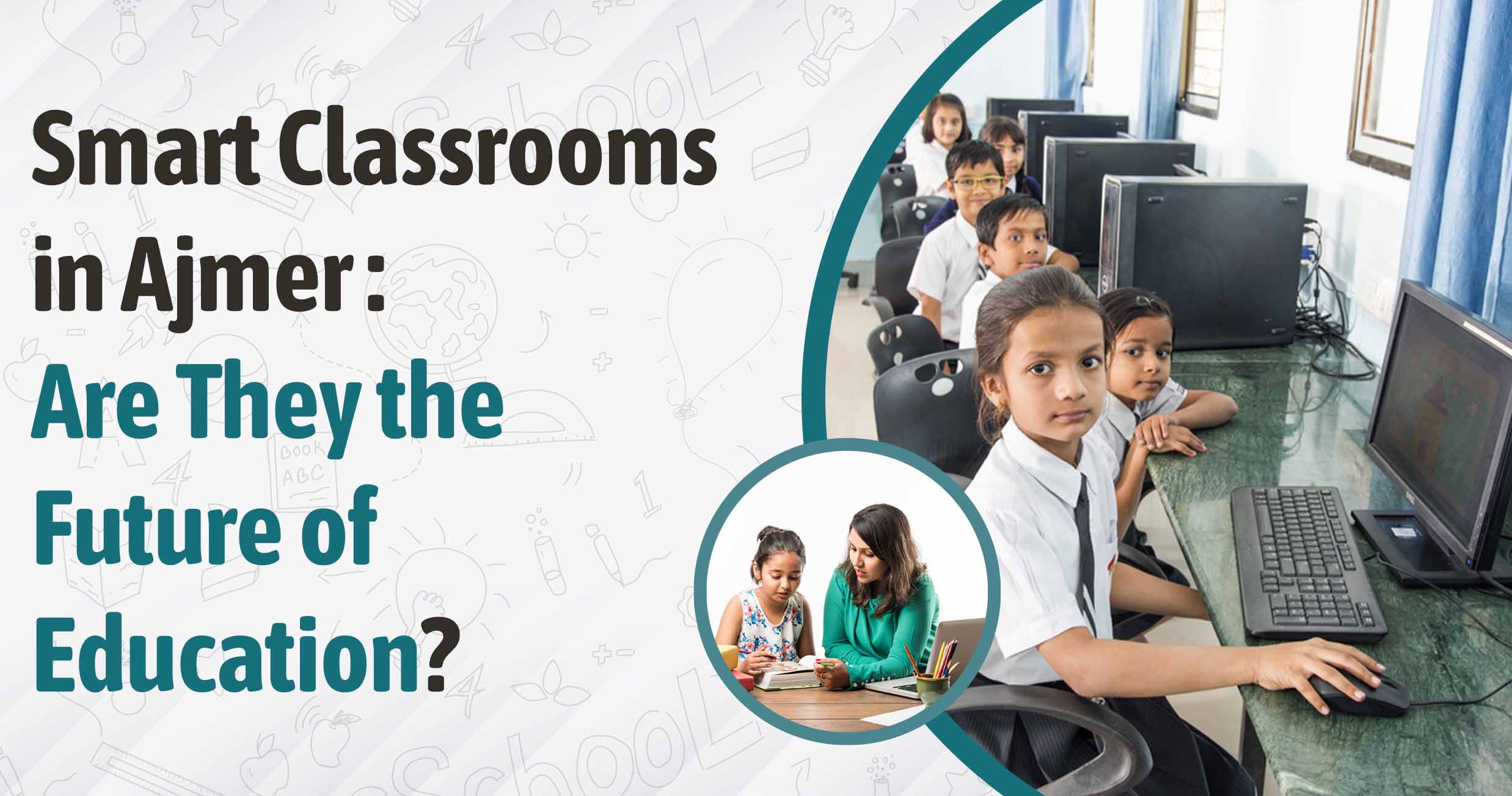
In the not-too-distant past, a classroom was simply a blackboard, chalk and a teacher with books. Yet, today, the landscape is shifting more swiftly than in our wildest dreams. Step into a 21st-century classroom in a modern school in Ajmer, and you will find children engrossed, interacting with 3D models, joining live sessions from experts worldwide or exploring virtual laboratories – all within their daily lessons.
The futuristic ‘smart classrooms’ in Ajmer are no longer a distant dream, as they become a new reality.
But the bigger question is – are these smart classrooms a mere passing trend or, in fact, the future of education in Ajmer?
Let’s dive deeper.
The old methods had their appeal – the scent of fresh notebooks, the comforting rhythm of writing on blackboards, and the human connection between teacher and student. But as information mushroomed and changed more quickly than ever, education had to try to keep up.
Here, we have smart learning technology: an education model that is not about replacing teachers but empowering them. Digital resources such as interactive whiteboards and AR/VR modules, not to mention AI-based assessments, are turning classrooms into dynamic centres of learning.
In cities such as Ajmer, where schools used to face resource gaps, digital classrooms in CBSE pattern have indeed proved to be a game changer. Lessons now stimulate the senses: children see, hear, touch, and even experience ideas, and learning is richer and more memorable.
Nowadays, parents aren’t just searching for a school that teaches math and science. What they want is institutions that help build an education bridge to the future; a future in which adaptability, creativity and critical thinking are the true currency of higher education.
And here’s why smart classes are winning over the parents:
Improved Engagement: Children are instinctively attracted to technology. And smart classrooms rely on this relationship to engage students who struggle to pay attention.
Personalized Learning: With digital tools, teachers can customize conversations and assignments for each student, moving more quickly for those who get it and patiently for those who don’t.
Real Life Connection: Intelligent learning often consists of practical simulations and allows children to learn not just the ‘what’ but the ‘why’ as well.
Prepared for a Digital World: Tomorrow’s jobs will be tech-based. Children who grow up in the digital classroom are growingly accustomed to and mastering technology at a very young age.
What is really happening in Ajmer is a quiet revolution in its educational scenario. Here are a few trends contributing to the growth of smart education:
Gamified Learning: Lessons are games, and they are as fun as they are effective. As part of this, education systems and schools are using learning reward platforms for tracking learning through points, badges, and challenges.
AI Tutors: Intelligent systems are processing students’ progress data and proposing customized study plans, enabling teachers to run large classrooms better.
Virtual and Augmented Reality: From taking virtual trips through history to dissecting virtual frogs in biology, VR and AR are helping to reshape old-school subjects.
Hybrid Learning Models: Thanks to high-quality recordings, online modules, and physical classes blending, learning is no longer constrained by school hours or even the classroom.
The schools that invest in these trends are not just modernizing their buildings but future-proofing the pedagogy to which they’re educating students as well.
The 21st-century education requires 21st-century infrastructure. It’s no longer just about pasting a smartboard or a projector on top. Schools in Ajmer are also going through a transformation in terms of infrastructure, in that innovative labs, digital libraries, collaborative spaces and internet connectivity across schools are becoming impervious.
Now, premier academics boast classrooms that are adaptable and equipped with smart podiums, interactive whiteboards, cloud-based attendance systems and surveillance for safety. These spaces are designed to motivate, engage, and innovate something old-school classrooms could never cultivate to the same degree.
When parents enter these new-age schools, they see not only walls and benches but also opportunities.
One of the worries parents occasionally express is whether smart classrooms are available to all students, not just the already privileged few.
The best part is that many best CBSE schools in Ajmer are making efforts to adopt a digital and inclusive way of learning. Be it through subsidized learning tools, teacher training or parent awareness programs, there is a clear effort to close the digital divide.
What’s more, as technology becomes cheaper and more easily interchangeable, innovative education, in one way or another, will become the rule rather than the exception – ensuring every child has a fighting chance in a digital learning world.
If the momentum holds, and all indications are that it will, the smart classrooms won’t just be the future; they will be the very essence of education in Ajmer.
They vow a system in which learning isn’t something that happens to you but something you share in, and one not orthopedically rigid but as nimble as the changing times, no longer confined to by-the-book by bound by the tech of its invention.
In this changing scenario, schools like Satguru International School and Ajmer are leading the way. Offering the best in education through inspiring academic excellence, international exposure, activities-based learning, world-class teaching methodologies and infrastructure, along with the means and opportunity to keep up with the fast developing technologically driven, this is an institution that is enabling a futuristic better world where innovative education is not a facility but, a fundamental right.
But the ultimate beneficiaries of this revolution will be our children, who will grow up not just better educated but gentler, more curious, more self-starting, more sophisticated and connected than any generation in human history.
Isn’t that what we, as parents, want?